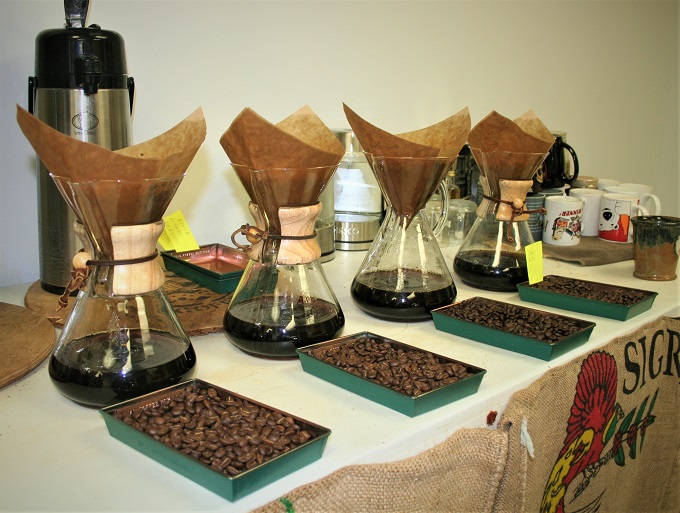What is Home Roasting?
What is Green Coffee? What are
Green Coffee Beans?
What are Qualities of Good Coffee?
How to Choose Green Coffee Beans?
Primers about Types of Coffees:
Guide to Coffee Regions
Guide to Coffee Cultivars
Guide to Coffee Processing Methods
Guide to Coffee Roast Styles
Get Started:
Home Roasting for Beginners
Buy Premium Green Coffee Beans
Buy Home Coffee Roasters
Keeping a Coffee Roasting Journal
What an amazing experience to sip that perfect cup of coffee made from top-quality beans roasted just the way you like them! But now and again, we experience a new batch of beans that just did not develop as we had expected, and we find ourselves wondering what went wrong.
The inspiration we receive from finding unique exceptional coffees is a big part of our home-roasting hobbies, but it also presents some challenges. Not all green coffee beans are alike! Each variety requires slightly different roasting to achieve its best potential.
Even if you roast the same beans every time, you may still find some inconsistencies. Often, these can be traced to small and easily overlooked variations in the roasting process.
Either way, a basic roasting journal can help you dial in your processes and create the profiles you desire every time. We know, we know… it sounds like homework! But if you keep it simple and savor the sampling, you will begin to find a lot of fun in keeping records of your home coffee roasting journey. No need to be fancy – a tiny notebook stored with your home roaster should work fine.

The best way to find out what coffees you like is to
roast and taste many varieties!
There are 4 factors that you should include in your roasting records:
Bean Info: Note the name, region, farm, variety, etc. Complete information about green beans can help you to know which varieties and regions produce beans that tend toward your preferences. It will also help you to decide on replacement beans if your favorites become unavailable. At Burman Coffee Traders, we make it easy to get this information – on each bag of green beans, labels include country, region and farm, processing method, and some include cultivar (those that do not are estate-wide blends).
Time: Timing is everything! And roasting great coffee takes time. But how much time? That depends on the bean, the equipment, and the desired roast point and flavor profile. By carefully observing the time it takes to begin yellowing the beans, time to first and second cracks, and total roast time (total roast time is probably easiest to track when beginning journaling), and doing so on your equipment, you will be able to more consistently hit those preferred flavor profiles. Careful attention to roasting times is also the best way to avoid the guessing game which can be nerve-wracking when determining roast level by sight alone!
Temperature: Roasting temperature is directly related to the amount of time a batch takes to roast. But the intensity of heat can also substantially impact the chemical reactions that take place in the beans during roasting, resulting in unintended variations. Again, the equipment you are using will make a difference. For some roasters, recording temperatures will mean noting simply whether high, medium, or low setting was used. On more sophisticated roasters, you will be able to record specific temperature readings from each step of the roast. Be as accurate as your equipment allows.
Tasting notes: How will you know if your process resulted in the flavors you desire? A cupping, of course! Recruit your friends and family to assist you in identifying the taste characteristics of the body, aroma and flavors. (Check out our tips on tasting notes: Taste Qualities of Good Coffee). Take detailed notes. Everyone’s palate is different and there are no wrong answers! Once you have collected sensory data, you will be more ready to make the right adjustments to bean type, time and temperature.
These factors are only the most basic. The complexities of coffee present countless elements that may be evaluated, including roast evenness (are some beans scorched on one side or splotchy?), overall consistency (are all beans the same shade?), presence of chaff, and undesirable defects such as chipping or breaking beans, pest damage, etc. Feel free to totally geek out in pursuit of that perfect cup, or just keep it simple and breathe easy feeling reassured that you are getting your best roasting results every time.
The most valuable benefit of a roasting journal is the realization that consistency and creativity can go hand in hand for the skilled home roaster. With the learning that comes from roasting notes, you can gradually perfect your roasting skills and become a master of the liquid arts!
More Recommendations



